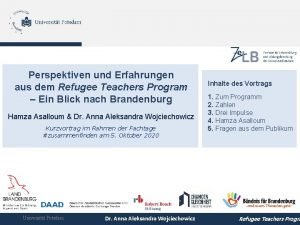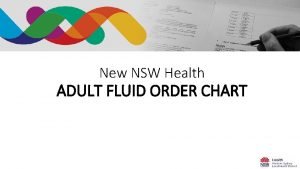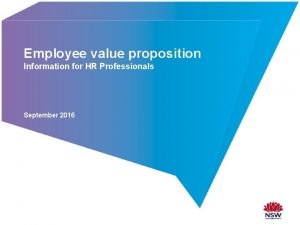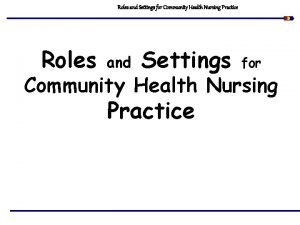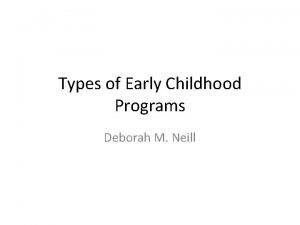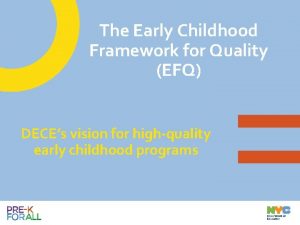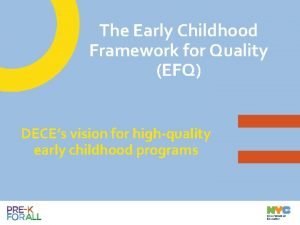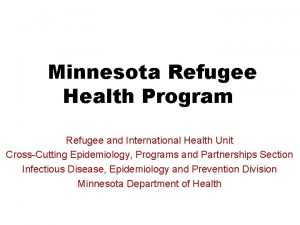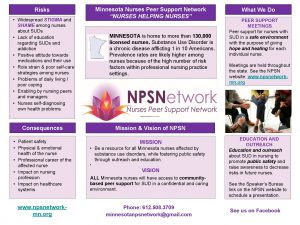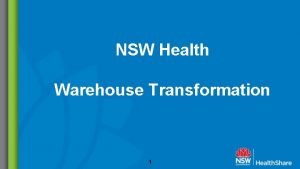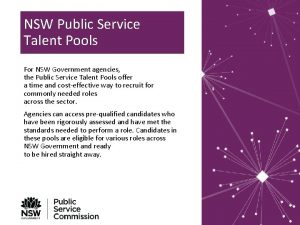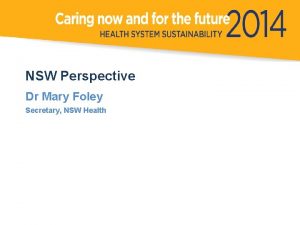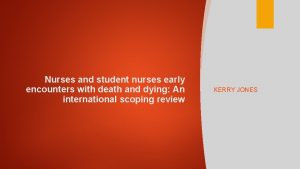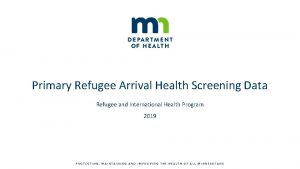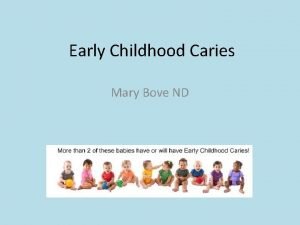NSW REFUGEE HEALTH SERVICE Early Childhood Nurses Program














- Slides: 14

NSW REFUGEE HEALTH SERVICE Early Childhood Nurses Program Review: February- November 2017

Why is an early childhood assessment important for refugees and asylum seekers? • Refugee and Asylum Seeker children = higher risk of developmental delays? • This can be due to refugee camp/detention stay; settlement process • Effect of these processes on the primary caregiver can affect attachment • Developmental delays can be overlooked

Barriers faced by Refugees and Asylum Seekers in accessing Early Childhood Services Lack of awareness of what the Early Childhood Service is Language barriers Families unable to find or access clinics Different nurses at clinics – affects engagement and attendance for clients • Mainstream ECHN’s may not feel knowledgeable when caring for these families • •

NSW RHS Early Childhood Nurses Program • • • Service began February 2017 Sustained home visiting service – antenatal period onwards 2. 5 FTE. 0. 6 included from November. Initial primary focus was home visiting Needs basis.

Client Country of Birth COUNTRY OF BIRTH NUMBER IRAQ 105 SYRIA 36 AUSTRALIA 10 IRAN 8 CHINA 7 FIJI 7 AFGHANISTAN 5 PAKISTAN 5 PHILIPINES 3 TURKEY 3 NIGERIA 3 TONGA 3 CONGO 2 INDIA 2 INDONESIA 2 LEBANON 2 PNG 2 SRI LANKA 2 UGANDA SRI LANKA PNG LEBANON INDONESIA INDIA CONGO TONGA NIGERIA TURKEY PHILIPINES PAKISTAN AFGHANISTAN FIJI CHINA IRAN AUSTRALIA SYRIA IRAQ 0 30 60 NUMBER 90 120

Visa Types CLIENT VISA TYPES OTHER 32% 202 35% 202 204 1% 200 31% 200 204 OTHER

Where are our referrals coming from?

Issues Emerging…. . • • Delays in fine motor skills Delays in language development Prevalence of tooth decay Multiple psychosocial issues related to history of trauma and lack of financial assistance

How to address these issues? • Simple interventions prior to commencing school work well • Empowering parents as teachers is an effective way to deliver the interventions • If intervention is not successful, then a referral can be initiated • Providing material needs for the family (courtesy of Dandelion Services) toys, clothing, books, cots, and prams to vulnerable families.

How to address these issues? (Cont) • Provide ongoing support to families ensuring referrals have been accepted • Advocating for the women in the community • Building partnerships within the community to ensure better clinical and referral pathways for families • Early Childhood Nurses continue to work within the large multidisciplinary team in Refugee Health which includes the GP Clinic Nurses, RHNs, RH Social Worker, and the RHS Disability Team. • Early Childhood Nurses continue with interagency collaboration

Referral Pathways • • • • Oral health Vision Hearing Speech Occupational Therapy Women’s Health Supported playgroups/Mother’s groups Mental health/counselling RHS clinics (GP Program, Immunisation, 4 yo clinics) Nutrition/Dietetics Asylum seeker support services Charities Mainstream Child & Family Health services

Further Research Opportunities • Qualitative Research – Have all barriers to accessing services been dealt with? – Do parents feel supported and empowered by this program? – What further can be done to help refugee families raise their children? • Quantitative Research – Further demographic research – Do developmental delays occur at a higher rate in refugee populations? – What difference in outcomes can be seen at school?

Conclusion • This is an evidence-based service that overcomes barriers to provide treatment for an at-risk population • Our program could potentially provide a blueprint for Nationwide refugee/Asylum seeker specific early childhood services • Further research is important

Questions?
 Early childhood directorate nsw
Early childhood directorate nsw Middle childhood years
Middle childhood years Pdp early childhood education and training program
Pdp early childhood education and training program Refugee teachers program
Refugee teachers program Fluid order chart
Fluid order chart Employee value proposition framework
Employee value proposition framework Hgen
Hgen Psc talent pool
Psc talent pool Nsw health
Nsw health Nsw health rto
Nsw health rto Community health nursing roles
Community health nursing roles Types of early childhood programs
Types of early childhood programs Chapter 2 types of early childhood programs
Chapter 2 types of early childhood programs Efq
Efq Efq
Efq



